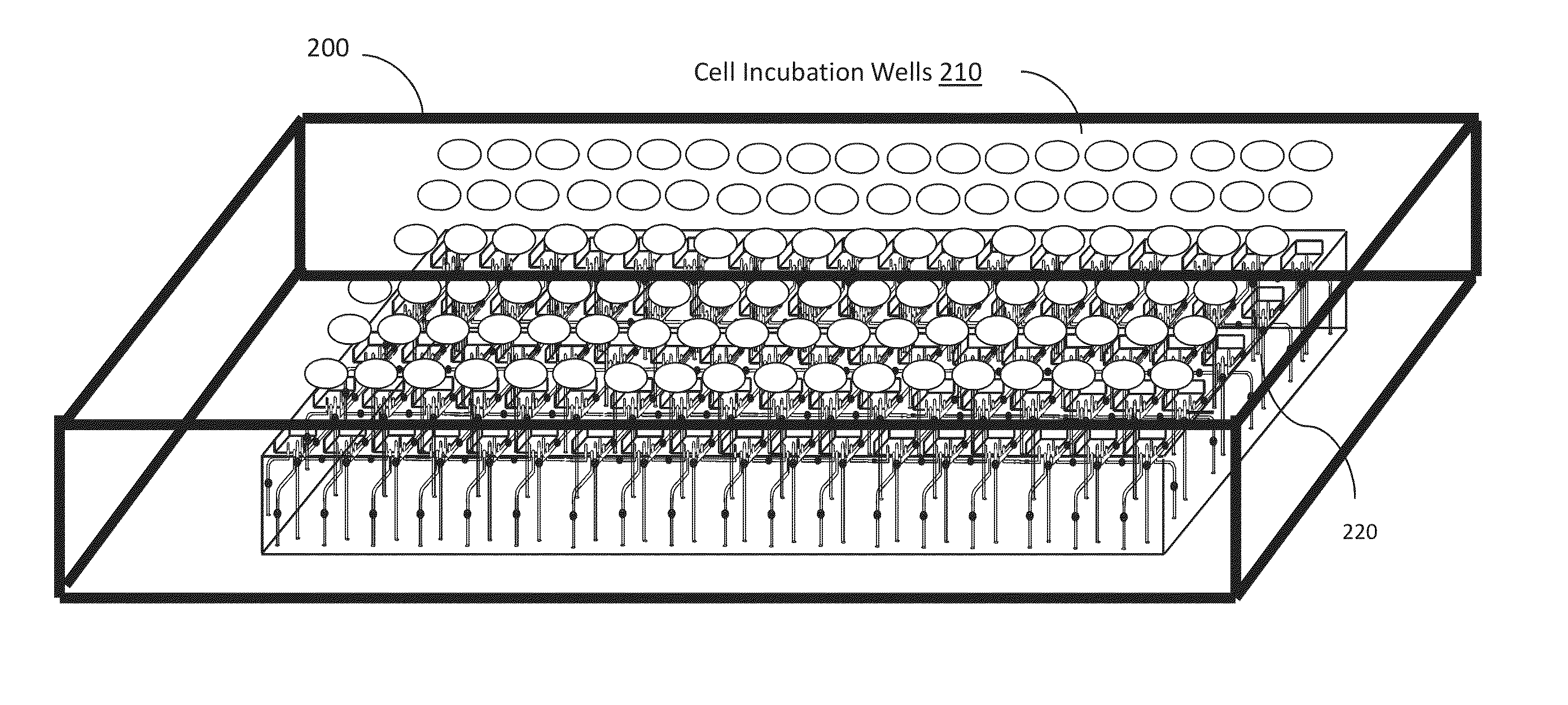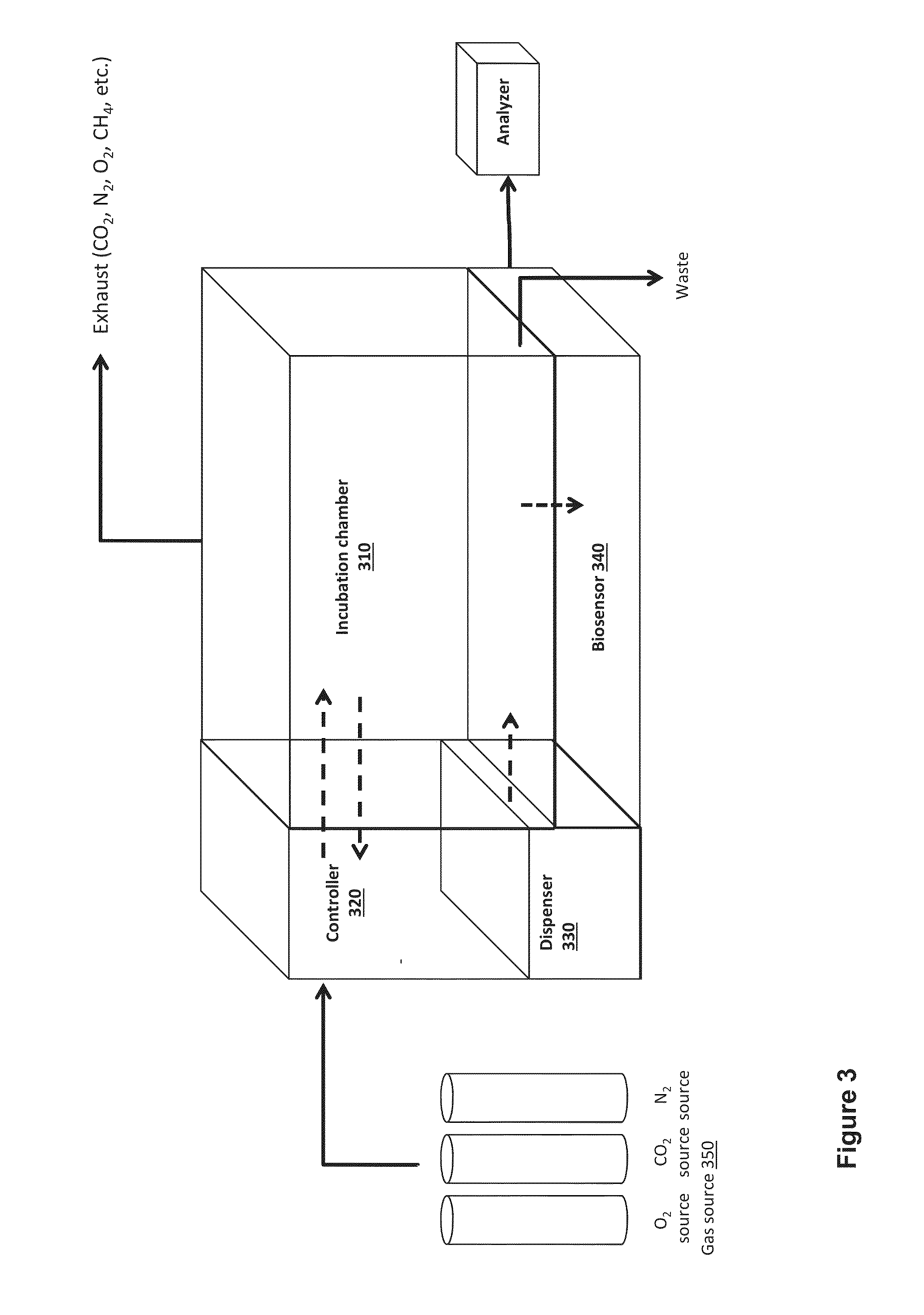Cell Incubator and Cellular Culture Laboratory Test bed
a cell incubator and laboratory technology, applied in the field of microfluidic systems, microarrays, microfluidic systems, miniature biochemical and chemical detectors, can solve the problems of discontinuing or disrupting the control cell nurturing condition, and affecting the quality of cell cultur
- Summary
- Abstract
- Description
- Claims
- Application Information
AI Technical Summary
Benefits of technology
Problems solved by technology
Method used
Image
Examples
example aim 1
[0454]Determine if level of NO and time of NO exposure regulate the expression of iNOS and apoptosis.
[0455]An example working hypotheses is that long term of cells exposing to low concentration of exogenous nitric oxide causes a negative feedback mechanism inducing down regulation of iNOS and promotes tumor progression. As is well known, low NO concentration reduces apoptosis. Thus, low concentration of exogenous NO causes down regulation of iNOS resulting in a reduced ability to produce NO from iNOS. The lower level of NO resulting from down-regulated iNOS will prolong the lifetime of cancer cells. FIG. 42 summarized the relationship between NO exposure concentration and duration (control variables in the experiment) and cell survival time.
[0456]Due to in fact that NO levels are needed to regulate in low ranges, the experiment of this study requires in process measurement of NO concentrations during cell culture. Hence, an incubator embodiment provides the convenience, accuracy, an...
example aim 2
[0463]A high level of oxygen in the cellular environment causes a normoxic condition which increases metabolic use of NO. However, low levels of oxygen cause a hypoxic condition that will maintain NO in the cellular environment because hypoxic conditions retards NO degradation. Therefore, it can be predicted that the duration of NO exposure under hypoxia will be longer than time of NO exposure under normoxia. Increasing time of NO exposure will cause down-regulation of iNOS by negative feedback effect. One can observe iNOS expression, for example, using a Western Blot method.
[0464]Such work facilitated by various embodiments demonstrates how NO plays role in apoptosis mechanism in cell by presenting the expression of iNOS as negative feedback effect. Consequently, such work facilitated by various embodiments also demonstrates how different of the level of NO and time affect to iNOS expression in cancer cells. Understanding the effect of exogenous NO to apoptosis pathway can directly...
PUM
 Login to View More
Login to View More Abstract
Description
Claims
Application Information
 Login to View More
Login to View More - R&D
- Intellectual Property
- Life Sciences
- Materials
- Tech Scout
- Unparalleled Data Quality
- Higher Quality Content
- 60% Fewer Hallucinations
Browse by: Latest US Patents, China's latest patents, Technical Efficacy Thesaurus, Application Domain, Technology Topic, Popular Technical Reports.
© 2025 PatSnap. All rights reserved.Legal|Privacy policy|Modern Slavery Act Transparency Statement|Sitemap|About US| Contact US: help@patsnap.com



